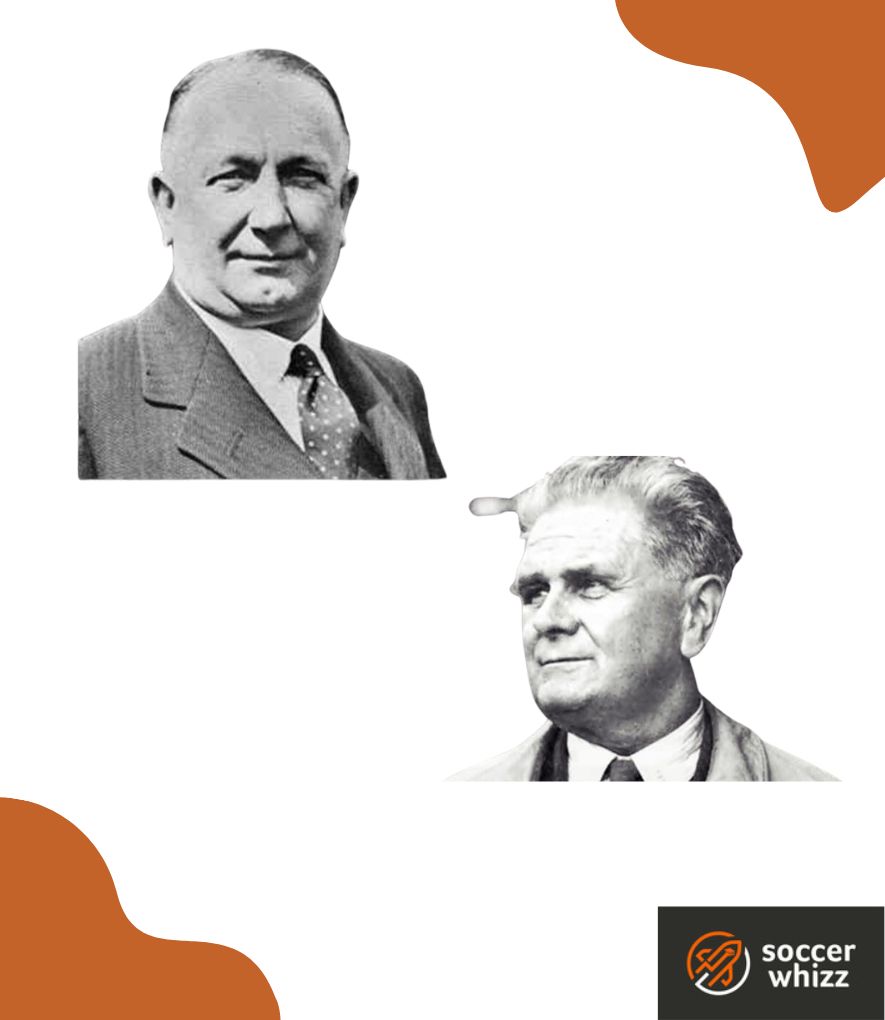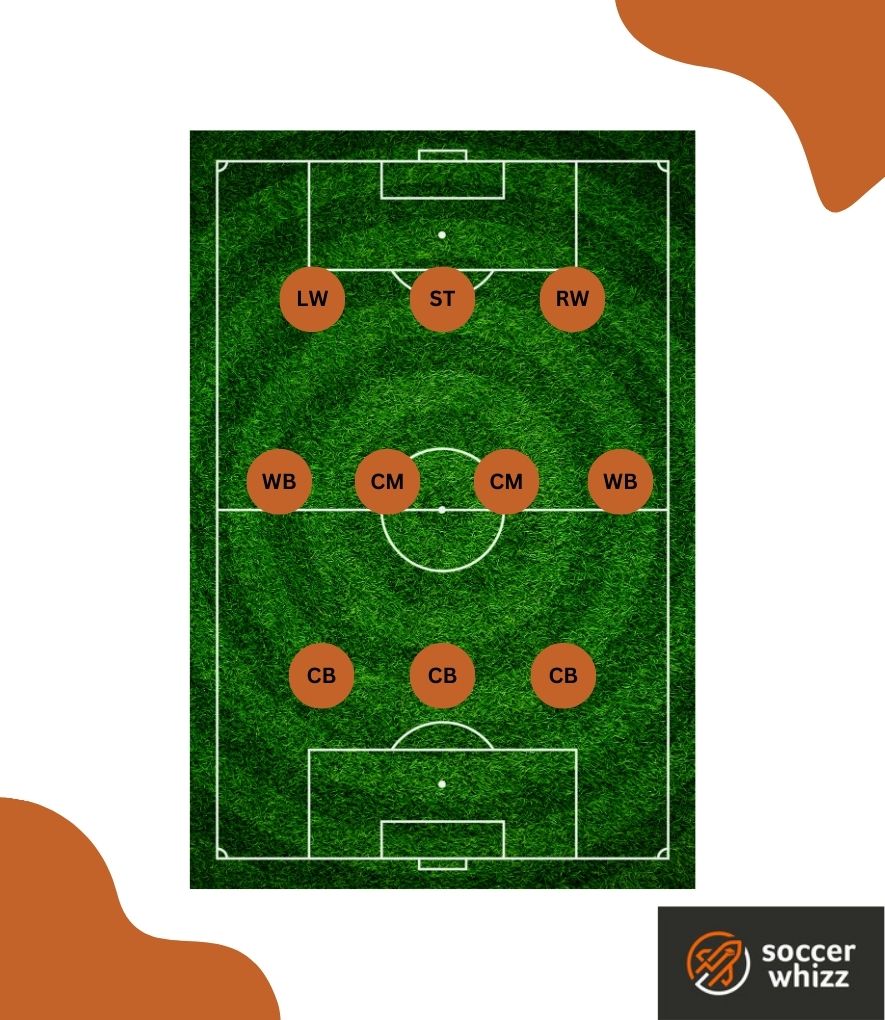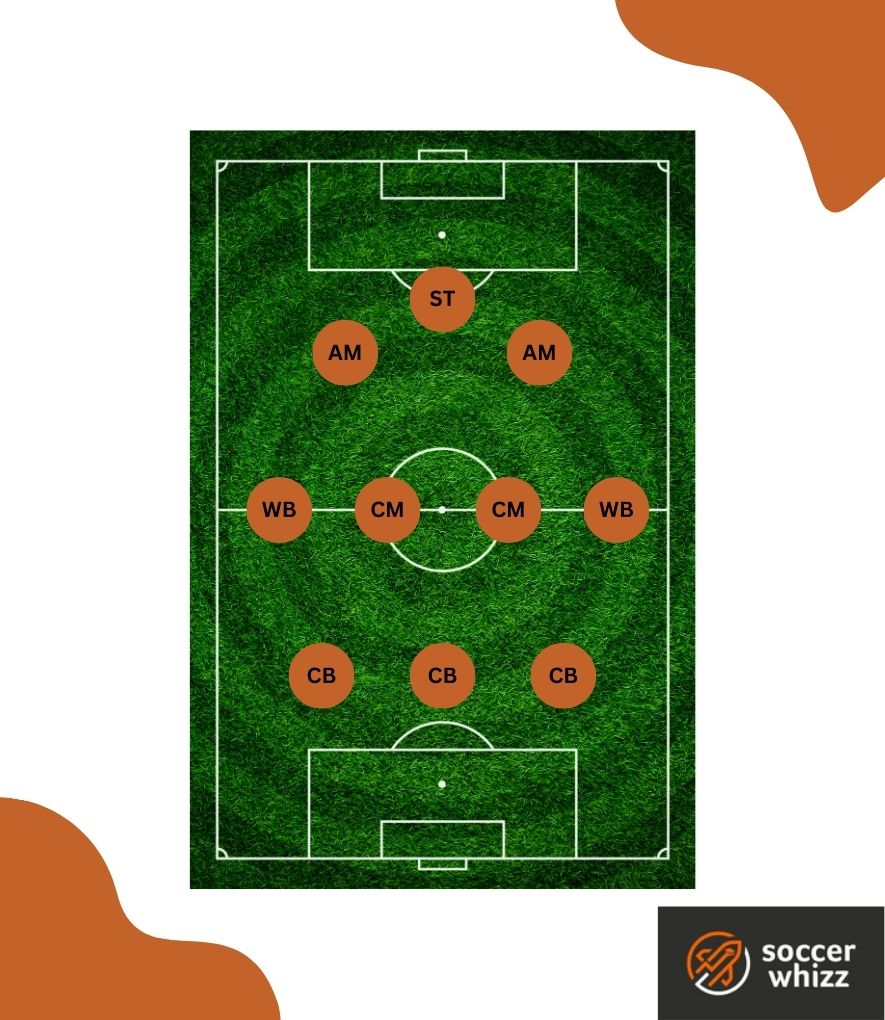In the ever-evolving realm of soccer tactics, coaches and managers continually strive to uncover innovative ways to gain an edge over their opponents.
While various formations have emerged throughout the history of the beautiful game, few have captured the attention and yielded the kind of success witnessed with the 3-4-3 formation.
This tactical setup, renowned for its attacking prowess and defensive solidity, has become a formidable weapon in the hands of skilled tacticians, revolutionizing the modern game.
Throughout this article, we’ll analyze the tactical nuances of the 3-4-3 formation, dissecting the roles and responsibilities of each position, and highlighting the impact they have on the team’s overall performance.
We’ll also examine the success stories of clubs and national teams that have embraced this system, showcasing the masterful ways in which managers have harnessed its potential to achieve remarkable results on the field.
- Who invented the 3-4-3 formation?
- How does a 3-4-3 soccer formation work?
- What are the strengths of the 3-4-3 formation?
- What are the weaknesses of the 3-4-3 formation?
- Which professional soccer managers run a 3-4-3 formation as their primary shape?
- Which shape can effectively counter against a 3-4-3 driven tactic?
- Is the 3-4-3 a defensive or attacking formation?
- Concluding thoughts
Who invented the 3-4-3 formation?
In the realm of soccer, two visionary figures, Vittorio Pozzo in Italy and Herbert Chapman in England, emerged as exemplary proponents of ‘the System,’ a precursor to the modern 3-4-3 formation.

Their strategic brilliance laid the foundation for this tactical approach, while the iconic ‘Grande Torino‘ team achieved unprecedented mastery of its playing style.
The tragic Superga air disaster, which claimed the lives of one of Europe’s most talented generations, forever altered Italy’s football landscape and reshaped its perception as a defensive-minded ‘cattenaccio’ nation.
How does a 3-4-3 soccer formation work?
The 3-4-3 formation is characterized by the utilization of three central defenders, a double pivot in midfield, two wide midfielders or wing-backs, and a dynamic front line consisting of three attacking players.

This configuration ensures a well-balanced presence across the field and grants coaches the flexibility to prioritize different strategic approaches.
This formation is particularly favorable for possession-oriented teams aiming to build their play from the back.
The midfield double pivot acts as a vital link, capable of receiving the ball from the multiple central defenders, thereby initiating attacks.
Simultaneously, the inclusion of wing-backs and the front three offers valuable width, making it equally effective for counter-attacking teams seeking to absorb pressure and exploit the opposition’s vulnerabilities during swift breaks.
In terms of the front three, coaches can opt for various configurations.
Many prefer a narrow front three, deploying two number 10s positioned just behind a central forward.

Alternatively, a flat front three arrangement can be adopted, pushing the two wide forwards to the wings and aligning them with the central striker.
Another intriguing option is the utilization of a false nine, a player who drops back into creative areas, allowing the two inside forwards positioned behind them to venture into more threatening zones.
An exemplary player exemplifying this style is Roberto Firmino of Liverpool.
What are the strengths of the 3-4-3 formation?
Employing a defensive trio in a team’s formation grants the wing-backs the freedom to venture forward and actively participate in attacking maneuvers from wide and advanced positions.
This tactical setup encourages the wing-backs to combine with the wide forwards, creating numerical advantages on the flanks and forcing the opposition’s full-backs into deeper defensive positions.
Consequently, this creates additional space in the center of the pitch, enabling more fluid ball movement and attacking opportunities.
Simultaneously, the 3-4-3 formation strikes a fine balance between defensive solidity and offensive potency.
With five players dedicated to the attacking phase (the full-backs and front three), and the remaining five outfield players focusing more on defensive duties (the double pivot and three center-backs), the team benefits from a cohesive structure that aids both defensive security and attacking intent.
Collaboratively, the backline of five players ensures excellent defensive coverage, especially when the wing-backs drop back to reinforce the defensive shape.
This defensive stability is particularly advantageous in counter-attacking situations, where the 3-4-3 formation thrives.
Notably, managers have the flexibility to interchange players, maintaining a fluid and adaptable system.
Wing-backs can seamlessly transition into full-back positions, while central midfielders can push forward to support the attacking endeavors.
This fluidity represents one of the 3-4-3 formation’s greatest strengths, providing a multitude of options to support the lone striker.
With two wingers or inside forwards remaining in close proximity to the lone striker, and the central midfielders and wing-backs granted the freedom to join attacks, the risk of isolation often experienced in other formations, such as the 4-2-3-1, is mitigated.
Furthermore, the 3-4-3 formation proves advantageous for teams with ball-playing center-backs who possess confidence and proficiency in possession.
These defenders can adeptly distribute the ball among themselves and seamlessly link up with the midfield, while also having the ability to push forward and initiate attacks.
Facilitating this style of play is the presence of a deeper-lying central defender, often referred to as a ball-playing sweeper or libero in the Italian terminology.
This player assumes a covering role, supporting the two center-backs on either side and effectively neutralizing potential threats in the defensive setup.
What are the weaknesses of the 3-4-3 formation?
The wing-back roles within the 3-4-3 formation pose significant challenges, demanding players with exceptional speed, relentless work ethic, and remarkable stamina.
These positions require individuals who can maintain a high level of defensive commitment while showcasing proficiency in attacking contributions, as they constantly shuttle up and down the channels throughout the entirety of a 90-minute match.
One potential concern within this system lies in the limited defensive cover provided in the central areas of the pitch.
Due to the emphasis on width, there is a scarcity of players protecting the backline.
This vulnerability leaves the team exposed to potential trouble if the opposition manages to overload these wide areas with numerical superiority.
Alternatively, opponents who focus their attacks on the flanks could exploit the 3-4-3 formation’s limitations.
The defensive trio at the back is unable to cover as much ground as a traditional back four would, creating openings for aggressive counter-attacks that possess the potential to dismantle the defensive line.
Which professional soccer managers run a 3-4-3 formation as their primary shape?
Three names stand out here:
1. Antonio Conte
Antonio Conte, the renowned Italian coach known for his intense style, has consistently advocated for the implementation of a back three system wherever he has managed.

It comes as no surprise, given the immense success he has achieved with this tactical approach, securing numerous trophies both in Italy and England.
Notably, during his tenure at Chelsea, Conte’s adoption of the 3-4-3 system resulted in a remarkable turnaround in the team’s performance, culminating in their triumph as the 2016-17 Premier League champions and FA Cup winners.
In Conte’s 3-4-3 system, the lone striker role was flawlessly executed by Diego Costa, with the creative brilliance of Eden Hazard and Oscar/Pedro supporting him as the inside forwards.
The wing-back positions witnessed the exceptional performances of Victor Moses and Marcus Alonso, who showcased not only pace and attacking prowess but also a relentless commitment to defensive duties, delivering quality crosses and contributing significantly to the team’s overall play.
Additionally, the formidable defensive midfield partnership between N’golo Kante and Nemanja Matic, known for their combative nature and boundless energy, is widely regarded as one of the most exceptional midfield duos in the history of the Premier League.
2. Johan Cruyff
Johan Cruyff, the iconic manager of Barcelona during the 1980s and 90s, found the 3-4-3 formation to be the ideal system for his tactical vision.

As a pioneer of Total Football, both as a player and a coach, Cruyff favored this shape due to its versatility and ability to maximize the passing skills and tactical acumen of players like Pep Guardiola and Ronald Koeman.
Cruyff’s preference for the 3-4-3 formation stemmed from his belief that deploying four defenders was unnecessary and limited the potential impact of an additional attacking player.
By utilizing a back three, he created opportunities for increased attacking overloads in crucial areas of the field.
The width generated by the 3-4-3 configuration allowed Cruyff’s possession-oriented teams to stretch the opposition’s defense, creating space and facilitating ball retention—an essential aspect of his philosophy.
3. Gareth Southgate
Gareth Southgate, the England manager, has shown a strong affinity for deploying a back three system.

Throughout his tenure, he has often preferred the 3-4-3 formation, largely due to the wealth of talented full-backs available to the national team.
This tactical choice has allowed Southgate to leverage the speed and agility of players such as Kyle Walker, who seamlessly adapts to the right-sided center-back position.
Additionally, the presence of versatile and dynamic individuals like Kieran Trippier and Reece James makes them excellent fits for the wing-back roles.
Southgate’s strategy encourages the wide players to push forward into advanced crossing positions, working in tandem with the two narrow attacking midfielders, such as Raheem Sterling and Mason Mount.
In certain situations, these inside forwards transform into more traditional wingers, creating space in the central areas for other players to advance and contribute to the attack.
This tactical approach proved instrumental in England’s journey to the final of Euro 2020, a remarkable feat, although they ultimately fell short in a penalty shootout against Italy.
Which shape can effectively counter against a 3-4-3 driven tactic?
To overcome the challenge posed by the 3-4-3 formation, focusing on the flanks becomes crucial.
By overloading the wings and finding spaces in wide areas, you can counteract the intention of the 3-4-3 system to exploit these regions.
Additionally, putting pressure on the wing-backs forces them to retreat defensively, nullifying the impact of two pivotal players within this tactical setup.
One effective approach is to mirror the opponent’s formation and employ wing-backs of your own, thus matching their shape.
Another method involves utilizing overlapping full-backs to generate width and stretch the opposition’s defense.
Patience is key when facing a 3-4-3 formation.
It’s important to acknowledge that your opponents are likely to have more possession, but being well-prepared to capitalize on their weaknesses when you do regain the ball is essential.
This is particularly true when seizing opportunities for counter-attacks, as exploiting such moments can prove instrumental in overcoming a 3-4-3 system.
Is the 3-4-3 a defensive or attacking formation?
Formations that opt for a backline of 3 defenders, such as 3-4-3 and 3-5-2, are frequently associated with an attacking mindset.
However, it’s worth noting that other formations can also offer significant offensive potential.
For instance, the 4-1-3-2 formation and even the classic 4-4-2, when utilized with directness and intent, can be regarded as highly attack-minded setups.
This is due to the additional firepower provided by deploying two dedicated strikers, amplifying the team’s offensive capabilities.
Concluding thoughts
Ultimately, the 3-4-3 formation has proven itself as a formidable and dynamic tactical system in the world of soccer.
With its emphasis on attacking prowess, flexibility, and defensive stability, this formation offers teams a well-rounded approach that can be tailored to suit various playing styles and strategies.
However, like any formation, the success of the 3-4-3 ultimately depends on the team’s execution, player suitability, and the tactical acumen of the coach.
It requires a cohesive understanding among the players and adaptability to different game situations.
When utilized effectively, the 3-4-3 formation can unlock a team’s potential, create a potent attacking force, and provide a foundation for success on the soccer field.
If you’ve found this to be an enjoyable read, then you should also check out our tactical breakdowns of other soccer formations, such as:
If you enjoy the content that I create and would like to buy me a coffee, then I’d really appreciate it!
Any money that I earn through this donation will be re-invested into more content for this website.
Additionally, by sending in a donation you’ll also receive a copy of my recently released 190+ page eBook on Soccer Ball Care, as well as be subscribed to our mailing list where you’ll be regularly informed on the latest developments concerning the Soccer Whizz blog.
- Future Icons: Europe’s Emerging Midfield Maestros Set for Glory - December 4, 2023
- Kickstarting a Revolution: How Soccer Transformed the United States Over the Last Four Years - October 7, 2023
- 4-1-4-1 Soccer Formation [Analysis] - September 23, 2023

